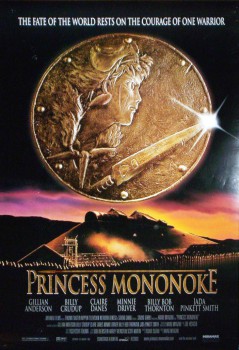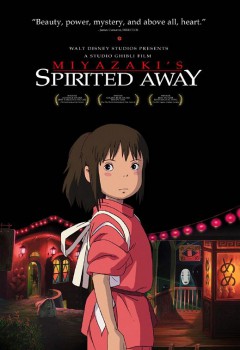Myazaki had been burned by foreign language adaptations of his films when Nausicaä was edited for its English language dub in 1985, becoming Warriors of the Wind with a run time of 95 minutes (the original film ran 117 minutes). As a result, the terms of Disney’s contract didn’t allow for much creative license. Disney requested some edits to Mononoke to make it more family friendly, but Myazaki refused. Their faithful adaptation received a PG-13 rating and Disney wasn’t yet ready to allow a film carrying their name to receive that rating. As a result, Princess Mononoke was distributed in a limited release by Miramax on October 29th, 1999 with a voice cast that included Claire Danes, Minnie Driver and Billy Bob Thornton. With little marketing, it didn’t cause much of a splash at the box office.
By 2000, it would appear that Disney wasn’t getting much out of the deal with Tokuma, but it is important to remember that Studio Ghibli’s films were enormously successful in Japan and Disney was also profiting off the home video sales there. It is likely for these reasons that Disney decided to start contributing to production costs of their films. Disney’s contract with Tokuma was extended with an agreement that Disney would pay 10% of the production costs of future films in exchange for right of first refusal for American distribution. The first film under the new contract was My Neighbors the Yamadas. Disney first took advantage of this deal with Spirited Away, the film that put Studio Ghibli on the map for Disney fans. With a dub supervised by head of Pixar and friend of Myazaki John Lasseter, Disney’s bond with Studio Ghibli was strengthened. Disney let the film tour the film festival circuit and gave it a short release in September 2002 to qualify for an Academy Award nomination. After it won the Best Animated Feature Oscar in 2003 (beating Lilo & Stitch), Disney quickly put together a nationwide release that March. Disney’s dub grossed $10 million domestically and marketing included the Studio Ghibli name, creating a brand presence for these films in America.
Now that the brand was there, Disney used the success of Spirited Away to attract viewers back to Kiki’s Delivery Service and Castle in the Sky by simultaneously releasing all three of them on DVD on April 15th, 2003. Marketing for Spirited Away advertised all three films and presented them as a collection from Studio Ghibli. Suddenly a studio that previously would only appeal to a small population of anime enthusiasts had film buffs and Disney fans singing it’s praises and clamoring for more. Myazaki’s next major film, Howl’s Moving Castle, was almost complete and Disney was eager to decrease the gap between the Japanese release and the American release of these increasingly popular films. While Howl made its Japanese premier in November, 2004, Disney was able to produce the dub with Lasseter and have it ready for U.S. theatrical release on June 10th, 2005. With less critical attention and released away from Oscar season, the film earned $5 million, half of what Spirited Away accomplished. In a cross-promotional effort, Disney released three more Studio Ghibli films on home video in advance of Howl’s theatrical release. The flagship title of this wave was Nausicaä of the Valley of the Wind, the film responsible for the creation of Studio Ghibli. There must have been a sense of personal victory for Myazaki as well, knowing that his ambitious film finally had a worthwhile release stateside.


